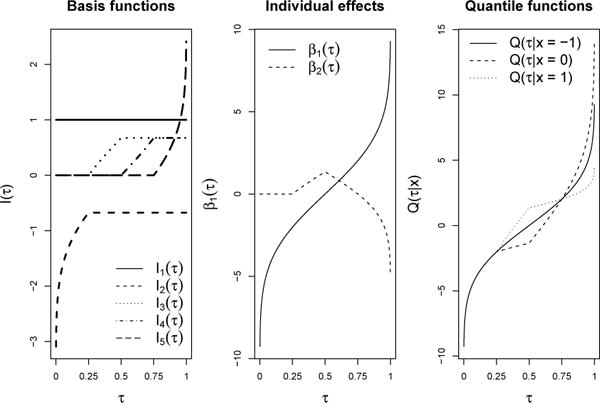Fig 2.

Plots of the quantile model with M = 5 basis functions with knots at (0.25, 0.5, 0.75) and one covariate x, with θ.1 = (0, 3, 3, 3, 3) corresponding to basis coefficients for the intercept and θ.2 = (0, 0, 2, −2, −2) corresponding to basis coefficients for x. The left plot displays the constant basis function (m = 1) and 4 Gaussian basis functions that each correspond to a different quartile of the distribution. The middle plot displays the intercept process β1(τ), which is the distribution when all covariates are 0, and the covariate effect β2(τ), defined as the deviation in the intercept process due to a one unit change in x. The final panel displays the conditional quantile function Q(τ|x) = β1(τ) + xβ2(τ) for x = −1, x = 0, and x = 1.
